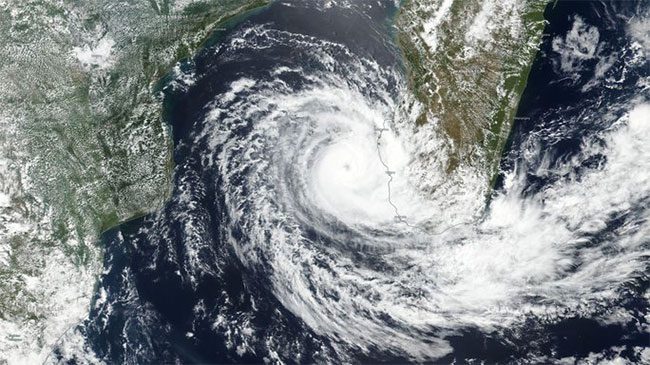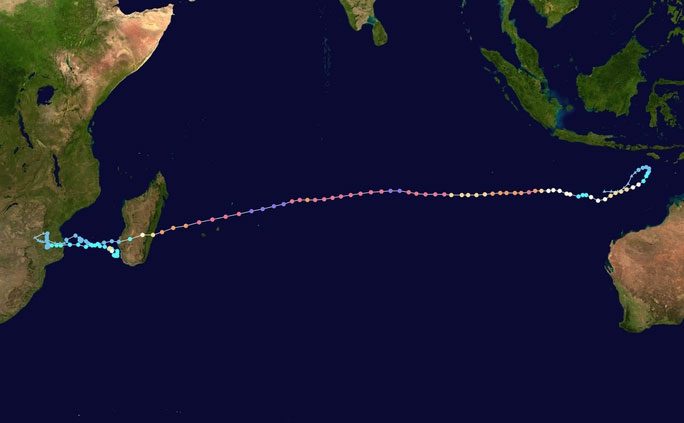On March 8, Bloomberg reported that Tropical Storm Freddy is moving away from the coast of Madagascar and is expected to make its second landfall in Mozambique on March 11, with wind speeds reaching up to 190 km/h.
Freddy intensified into a storm on February 6 this year, hundreds of kilometers off the coast of Western Australia. The storm has caused heavy rainfall and significantly impacted African nations. The World Meteorological Organization (WMO) remarked that Freddy is likely to become the longest-lasting tropical storm in the world, based on its trajectory.

Satellite image of Tropical Storm Freddy on March 7. (Image: NASA).
The United Nations Office for the Coordination of Humanitarian Affairs reported that at least 21 people have died as a result of Freddy causing severe flooding in Mozambique and Madagascar. Local authorities estimate that approximately 1.75 million people have been affected in Mozambique.
Weather forecasts indicate that Freddy could make its second landfall in Mozambique, a country with a population of 32 million, this weekend. Previously, the storm hit Mozambique on February 24.

Path of Tropical Storm Freddy. (Image: Wikimedia Commons).
Currently, Freddy has broken the record for the longest-lasting storm, previously held by Hurricane John. In 1994, John traversed the Eastern and Western Pacific for over 31 days.
Additionally, according to the WMO, Freddy is the storm with the highest accumulated energy ever recorded in the Southern Hemisphere, bringing rainfall three times the monthly average to Madagascar last week.
Meteorologist Jeff Masters, who works for the climate change-focused website Yale Climate Connections, predicts that Freddy may strengthen once again after re-emerging over the ocean.


















































